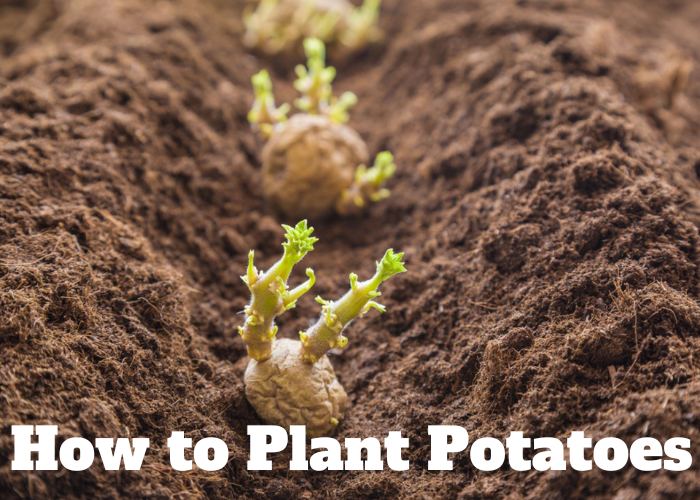One of the most satisfying gardening activities is planting potatoes. There is something about watching them sprout and grow that makes it all worth it. Not to mention, fresh potatoes are delicious! If you have ever wondered how to plant potatoes, you are in luck. This guide will walk you through the process step by step. Happy planting!
Choose the Right Type of Potato for Your Climate
When it comes to choosing the right type of potato for your climate, there are a few things to consider. First, what type of climate do you live in? Are you in an area with cool summers and cold winters, or do you have a more moderate climate? If you live in an area with cooler summers, you’ll want to choose a potato that is tolerant of lower temperatures. Some good choices include Yukon Gold potatoes and Russet potatoes. If you live in an area with a more moderate climate, you have a wider range of options when it comes to choosing the right type of potato. One option is to choose a potato that matures early, such as a Red Norland potato. This will allow you to harvest your potatoes before the hot summer months arrive. Another option is to choose a potato that matures late, such as a Yukon Gold potato. This will allow you to keep your potatoes in the ground longer, giving them a chance to develop more flavor. Whichever route you choose, be sure to select a potato that is well-suited for your particular climate.
Prepare the Soil by Loosening It and Adding Organic Matter
Prepare the soil by loosening it and adding organic matter. This will help the roots to penetrate the soil more easily and help the plant to obtain the water and nutrients it needs. Loosening the soil also helps to aerate it, which is important for preventing compacted soils. In addition, adding organic matter to the soil helps to improve its condition and helps to provide nutrients for plants. There are many different types of organic matter that can be added to soil, such as compost, manure, or leaves. The best type of organic matter to use will depend on the type of plant you are growing and the condition of your soil. Talk to your local nursery or extension office for advice on how to prepare your soil for planting.
Plant the Potatoes in Trenches, Making Sure to Mound up the Soil as They Grow
Planting potatoes in trenches is an effective way to prevent soil erosion. By mound up the soil as they grow, the potatoes will be better supported and the roots will be less likely to wash away. In addition, trenching helps to keep the potatoes from being waterlogged, which can encourage rot and make them more susceptible to pests. When planting potatoes in trenches, be sure to select a spot that receives full sun and has well-drained soil. This will help ensure that your potatoes thrive and produce a bountiful harvest.
Water Regularly and Be Patient – It Will Take a Few Weeks for Them to Start Growing
Watering your lawn is one of the most important things you can do to keep it healthy and lush. However, it’s important to remember that new seedlings need time to establish themselves before they can start growing vigorously. Watering regularly will help to ensure that they have the moisture they need to survive, but be patient – it will take a few weeks for them to start growing. Once they get going, though, you’ll be rewarded with a beautiful lawn that will be the envy of your neighbors.
Harvest Your Potatoes When They Are Big Enough, but Make Sure to Leave Some Behind So They Can Continue to Grow
Harvesting potatoes is a simple task that can be done with just a few tools. First, choose a dry day to harvest your potatoes. This will help to prevent the potatoes from rot. Next, use a shovel or spade to loosen the soil around the potatoes. Then, gently lift the plants out of the ground and shake off any excess dirt. Finally, sort through the potatoes and set aside any that are blemished or damaged. These can be used immediately or saved for seed potatoes. Harvesting potatoes is a rewarding experience that can provide you with fresh, homegrown potatoes all season long!
Store Your Potatoes in a Cool, Dark Place Until You’re Ready to Use Them
Store your potatoes in a cool, dark place until you’re ready to use them. This will help to keep them fresh and prevent them from sprouting. Potatoes should be stored in a paper bag or a covered container. Be sure to check on them regularly and use any that show signs of sprouting. Store-bought potatoes may last several weeks, but homegrown potatoes only last a few days. When selecting potatoes for storage, look for ones that are firm and free of blemishes. Avoid storing potatoes near onions, as this can cause them to spoil more quickly. With proper care, your potatoes will stay fresh and delicious until you’re ready to cook them.
Conclusion
Follow the instructions in this blog post, and you will be on your way to planting potatoes like a pro! If you have any questions or need more tips, feel free to contact us. We would be happy to help you along your potato-planting journey. Bon appetit!


